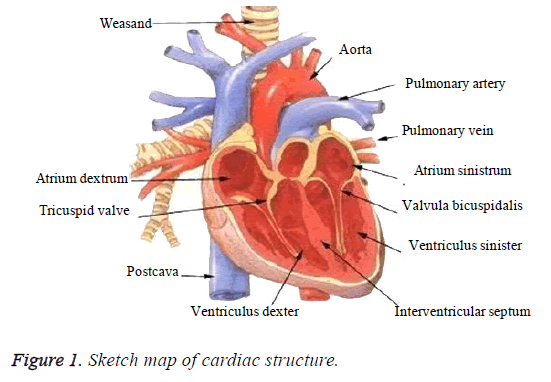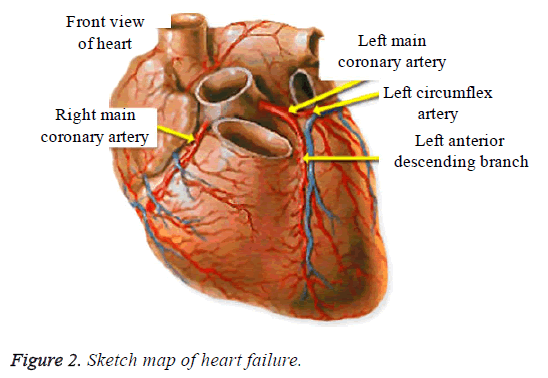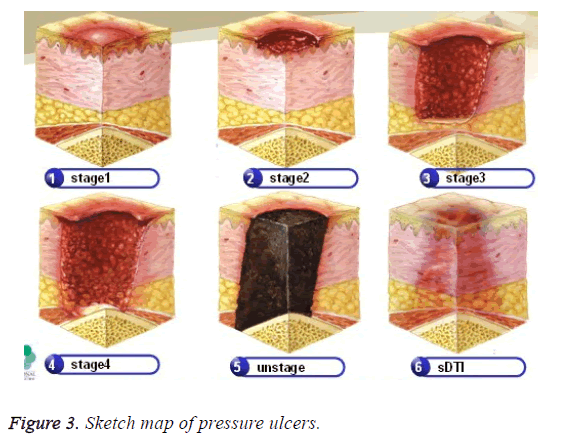ISSN: 0970-938X (Print) | 0976-1683 (Electronic)
Biomedical Research
An International Journal of Medical Sciences
Research Article - Biomedical Research (2017) Volume 28, Issue 22
Clinical investigation on the nursing needs of heart failure patients and analysis of planning nursing intervention effect
1The First Clinical School of University of Hubei Chinese Medicine, Wuhan, PR China
2The Affiliated Hospital of University of Hubei Chinese Medicine, Wuhan, PR China
- *Corresponding Author:
- Hongmei Xu
The Affiliated Hospital of University of Hubei Chinese Medicine
Wuhan, PR China
Accepted date: December 21, 2017
Objective: To explore and analyse clinical investigation on the nursing needs of heart failure patients and planning nursing intervention effect.
Methods: This clinical study took 2000 cases of heart failure patients receiving treatment in the Hospital between June 2012 and June 2014 as observation objects, and adopted questionnaire survey to understand the nursing needs of patients. The patients were divided into observation group and control group, both of which had 1000 cases of patients. The 1000 patients in the control group received routine nursing, and the observation group developed planning nursing intervention measures according to the result of questionnaire. Symptom relief, hospital stay, and Self-Rating Depression Scale (SDS) were taken as clinical evaluation indicators to compare the differences between the observation group and the control group.
Results: Before nursing, there were no significant differences among the clinical evaluation indicators of the two groups of heart failure patients, and the differences did not have statistical value. Under different nursing intervention modes, the symptom relief time, hospital stay, Self-Rating Depression rating scale (SDS), and other clinical evaluation indicators of the patients in the experimental group were significantly better than those of the patients in the control group (P<0.05), and the differences between the two groups were significant with statistical research value.
Conclusion: The nursing needs of heart failure patients are given priority to health education and prevention of complications. Planning nursing intervention can improve patients’ self-management ability, and eliminate negative emotions, and is conducive to disease treatment and the improvement of clinical treatment effect.
Keywords
Heart failure, Nursing needs, Investigation, Effect analysis.
Introduction
Heart (Figure 1) is a vital organ of human body. Heart failure is a collection of clinical syndrome resulting from various kinds of heart diseases developing at final stage. It is one of the leading causes of the death of patients.
Heart failure (Figure 2) has a long disease course and is difficult to treat. In addition to selecting reasonable treatment protocol for the patients during treatment, it is also quite important to select reasonable nursing countermeasures [1]. During nursing the heart failure patients, it is necessary to fully understand the patient's nursing needs, and actively adjust the clinical nursing strategy, so as to better adapt to the clinical treatment of patients, improve comfort degree of treatment, and provide a peaceful and warm environment for treatment; reduce the influence of external stimulation on the patients, and avoid sever emotional fluctuation of the patients [2]. The purpose of this study is to analyse the nursing needs of patients with cardiac failure, provide valuable nursing guidance, and thus improve patients' life quality. Through carrying out investigation on nursing needs and developing nursing plan, the level of clinical nursing of patients with heart failure was effectively improved, and the patients’ satisfaction with clinical nursing was also significantly improved. The specific nursing method and experience were reported as follows, with the aim of providing references for clinical nursing work.
Materials and Methods
General materials
This clinical research and analysis took 2000 cases of heart failure patients receiving treatment in the Hospital between January 2012 and December 2012 as the research objects. Adopting the method of controlled trials, the study used random approach and double-blind method in both of cases selection and cases grouping, so as to ensure the fairness of the experiment and the reliability of test results. 2000 cases of patients with heart failure were divided into the experimental group and the control group, both of each had 1000 cases of patients. Among the 1000 cases of patients in the experimental group, there were 520 male cases and 480 female cases; the patients’ ages were between 48 and 73 y old, and their average age was (60.23 ± 4.76 y old). The rating of the cardiac function of the patients of the experimental group was as follows: 600 cases of level III, and 400 cases of level IV. Among the 1000 cases of patients in the control group, there were 510 male cases and 490 female cases; the patients’ ages were between 48 and 72 y old, and their average age was (60.45 ± 4.54 y old). The rating of the cardiac function of the patients in the experimental group was as follows: 600 cases of level III, and 400 cases of level IV. There were significant balance between the experimental group and the control group in number of cases, gender, age, clinical evaluation indicator of cardiac function grading. And the statistical processing result was P>0.05, which suggested the two groups were comparable. This study has obtained the approval of ethics committee of our hospital.
Methods
Control group: The routine nursing intervention on the patients of the control group includes the following steps: (1) diet intervention: the diet of heart failure patients shall be given priority to light and well-balanced food as well as those easy to digest. Besides, they also need to eat more fresh fruits and vegetables, control the intake of salt, and give up smoking and drinking [3]; (2) life intervention: scientific work and rest, prevention of heavy manual labor and being overworked. The patients in serious condition shall take absolute rest in bed; (3) nursing of preventing pressure sores: for the long-term bedridden patients, it is necessary to strengthen their individual health care, assist them to turn over regularly, change their bed sheet and clothes, and massage them, so as to avoid the pressure ulcers caused by the injury of the patients’ skin (Figure 3); (4) medication guidelines: monitor the patients’ prescribed medication, avoid changes of dosage without permission, and improve their compliance; (5) health education: take etiology and treatment methods of heart failure as education content, propagandize through propaganda column, brochures, public lectures, and answer the doubts of patients patience with patient; (6) discharge guidance: keep effective contact information of patients, carry out regular telephone follow-up, track and guide the patient’s medication and life, remind the patients to receive timely medical treatment once the condition is abnormal, and take periodic review [4].
Experimental group: Nursing questionnaire: After the patients of the experimental group admit to hospital, the clinical nursing personnel shall hand out nursing questionnaire to patients and their family members. With questionnaire survey, the nursing personnel can understand the nursing needs of patients as well as their most accurate personal information, disease course and medical history, so that they can design targeted and personalized nursing plan according to the patient’s specific situation to improve the pertinence and efficiency of patient nursing. In the process of nursing, it is necessary to communicate with the patients and their family members at anytime and anywhere, so as to understand the satisfaction of the patients and their family members with nursing. When the patients and their family members bring forward rectification opinions, the nursing personnel shall accept with an open mind, and properly handle them, so as to promote the harmonious development of the doctor-patient and nurse-patient relationship [5].
Psychological nursing: Psychological nursing is a top priority in the process of clinical nursing of heart failure patients. For the heart failure patients, scientific and reasonable psychological nursing intervention can relieve their anxiety, make them keep peace and better cooperate with clinical treatment and nursing. Besides, it can also effectively improve clinical treatment and nursing intervention effect. In this controlled trial, the nursing clinical personnel took psychological adjustment as the key content, and the specific improvements were as shown below.
(1) The nursing personnel shall talk with patients intimately and friendly, and shall select a relatively quiet and private environment, so as to avoid that the patients are too shy to open their mind to the nursing personnel. The nursing personnel shall firstly have an understanding of disease course, treatment condition and living habits of the patients, and point out the improper acts. Under the premise of understanding the basic situation of the patients, the nursing personnel shall provide the patients with therapeutic counselling. According to the patients’ grasp of the disease knowledge, the counselling content can be selected from heart disease knowledge, diet control measures, blood pressure and blood lipid regulation methods. The communication between nursing personnel and patients is to make the patients know the etiology, treatment and prognosis of heart failure, eliminate their fear of the unknown disease, relieve their bad mood, and allow them to build up confidence in the treatment [6].
(2) The nursing personnel shall listen patiently to the patients’ words, understand the patients’ clinical symptoms, and listen to the opinions of the patients, so as to make patients keep the initiative in treatment activity, and promote their rehabilitation as far as possible. The nursing personnel shall do a good job in the mobilization of the patients’ family members, and enrich their disease knowledge, so that they can monitor the patients’ medication and control their diet, etc. If the treatment effect is not satisfactory, the nursing personnel shall timely communicate with the doctors to find the reason, so that the patients can feel the care and help from the medical personnel.
Observation indicators
In this group of controlled trials, the selected clinical evaluation indicators include: symptom relief time, hospital stay, Self-Rating Depression Scale (SDS). Test data of two groups of patients were accurately recorded, and were compared to obtain the final test conclusions through using statistical analysis software.
Statistical methods
In the analysis of the controlled trials, the adopted statistical analysis software was SPSS19.0. All data coming from the controlled trials was analysed and processed with that software. Among it, the measurement data was represented with mean plus or minus average (x̄ ± s), and chi-square was used in the comparison between groups; the counting data was represented with natural number (n) and percentage (%), and t was used in the comparison between groups. In statistical analysis, 0.05 was used as the inspection standard, and the confidence interval was 95%. When P<0.05, the comparison between groups was considered to have significant difference with statistical value.
Results
Seen from the results of this group of controlled trials, the cardiac function and living quality of the patients in the experimental group of patients was significantly better than that of the patients in the control group (P<0.05), and the comparison between the two groups had significant difference with statistical research value. The detailed data was as shown in Table 1.
| Group | Cases | Relief tine (h) | Hospital stay (d) | SDS rating (before intervention) | SDS rating (after intervention) |
|---|---|---|---|---|---|
| Experimental group | 1000 | 4.36 ± 3.45 | 13.34 ± 5.34 | 46.33 ± 7.68 | 32.31 ± 4.27 |
| Control group | 1000 | 7.02 ± 4.23 | 18.56 ± 8.43 | 46.18 ± 7.81 | 41.54 ± 3.43 |
| P value | <0.05 | <0.05 | >0.05 | <0.05 |
Table 1: Comparison between the two groups of patients on the nursing effect (n, x¯ ± s).
Discussion
Heart failure is a collection of clinical syndrome resulting from various kinds of heart diseases developing at final stage. It is one of the leading causes of the death of patients [7,8]. With a long disease course, it is difficult to treat. During the treatment, patients will have different degrees of negative emotions. The presence of these negative emotions will not only affect the treatment progress, but also will cause the continuous decline of the patients’ living quality. With close and friendly nursepatient communication, psychological intervention can enrich the patients’ understanding of disease, alleviate their anxiety, and help them to maintain peace and receive treatment actively. Seen from the results of this group of controlled trials, results, the symptom relief time and hospital stay of the patients in the experimental group was significantly shorter than that of the patients in the control group (P<0.05); the SDS score of the patients in the experimental group was obviously lower than that of the patients in the control group (P<0.05); the comparison between the two groups was significant with statistical value.
Conclusion
In conclusion, planning nursing measures can relieve the negative emotion of the heart failure patients, reduce their hospital stay, shorten recovery time, improve their cardiac function and living quality [9,10]. Therefore, planning nursing measures are worth of being promoted in clinics.
References
- Xiong Y. Investigation on the self-nursing ability of the gerontal patients with chronic heart failure. Knowl Prev Contr Cardiovasc Dis 2016; 1: 101-103.
- Liu Y. Clinical investigation on the nursing needs of heart failure patients and analysis of planning nursing intervention effect. Proc Clin Med 2016; 4: 311-313.
- Liu X, Zhu Z, Shen B, Zhang H, Niu C, Liu Y, Lv J, Zhang J, Tang L. Influences of systematic management on the living quality of patients with chronic heart failure. Chinese J Integr Med Cardio/Cerebrovasc Dis 2015; 2: 166-168.
- Wen H, Zeng X. Cause analysis of hemodialysis patients with heart failure and observation of clinical nursing intervention effect. J Clin Rat Drug Use 2011; 19: 43-44.
- Huang X. Analysis of the nursing of family members in the home care of patients with chronic heart failure. Lab Med Clin 2011; 19: 43-44.
- Yung KW, Yung TT, Chung CY, Tong GT, Liu Y, Henderson J, Welbeck D, Oseni S. Principles of cancer staging. Asian Pac J Surg Oncol 2015; 1: 1-16.
- Cahill T, Chen XL, Lee JW, Weiss M, Chang VT, Cella D. Principles of radiofrequency ablation for cancer. Asian Pac J Surg Oncol 2015; 1: 47-58.
- Dobson PR, Brown BL, Beck D, Yang H, Zhou J, Voon YL. Management of surgical oncologic emergencies. Asian Pac J Surg Oncol 2015; 1: 59-72.
- Ghoneum M, Felo N, Nwaogu OM, Fayanju IY, Jeffe JA, Margenthaler DB. Clinical trials in surgical oncology. Asian Pac J Surg Oncol 2015; 1: 73-82.
- Mellotte G, Maher V, Devitt PG, Shin VY, Leung CP. Minimally invasive surgical oncology: State of the art. Asian Pac J Surg Oncol 2015; 1: 101-112.


